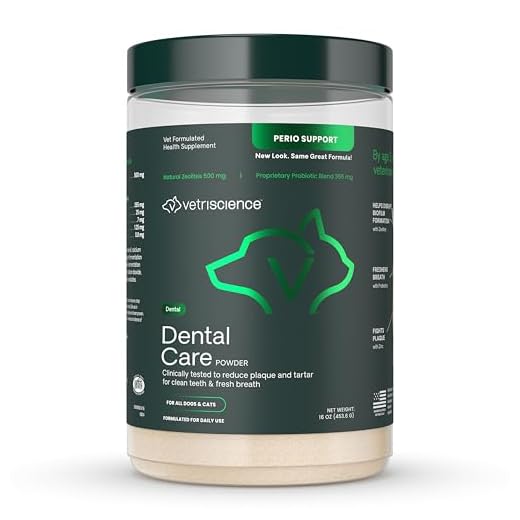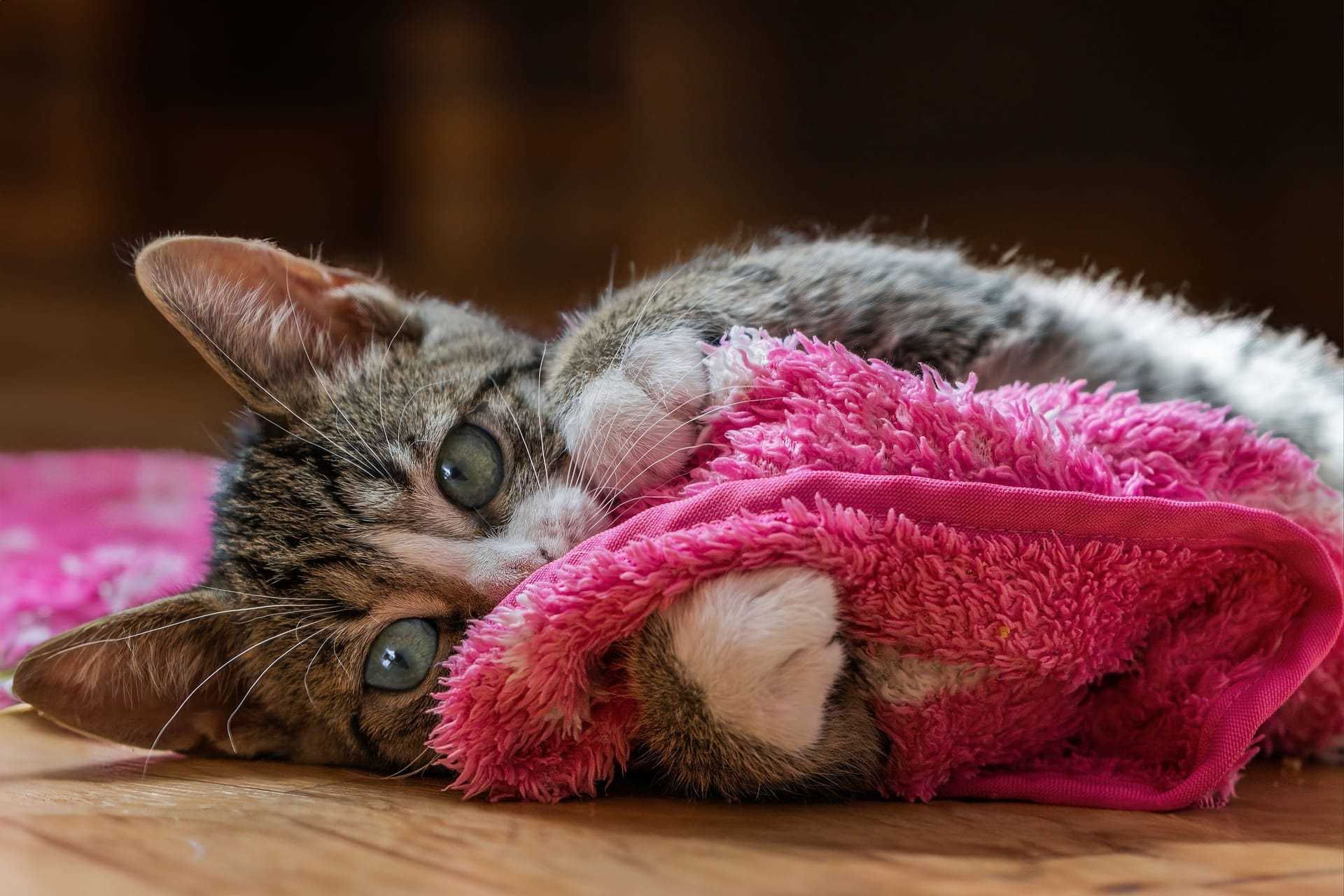




The cornerstone of maintaining your feline’s mouth health lies in regular brushing. Aim for at least two to three times a week using a soft-bristled toothbrush and a toothpaste formulated for pets. This simple act can significantly reduce plaque buildup and prevent periodontal disease.
This article serves as a guide for cat owners seeking to enhance their pet’s oral hygiene. It covers practical techniques, recommended products, and tips for establishing a routine that makes dental maintenance enjoyable for both you and your pet.
You will learn about various chews and treats that can aid in reducing tartar, as well as the importance of regular veterinary check-ups. Simple adjustments to your cat’s diet and lifestyle can lead to a healthier mouth and overall well-being. By implementing these strategies, you can ensure your furry companion enjoys a happier, healthier life.
Optimal Oral Hygiene for Felines
Regular examination of the mouth is important for maintaining your pet’s health. Look for signs of plaque buildup, swollen gums, or bad breath. These indicators can lead to more serious issues if not addressed.
Incorporating specific practices into a routine can significantly improve your feline’s oral hygiene. Daily brushing is highly recommended, using a toothbrush designed for pets and a suitable paste, as human toothpaste may be harmful.
Methods to Ensure Oral Health
Adopt these strategies to promote a healthy mouth:
- Professional Cleanings: Schedule veterinary visits for professional cleanings, usually recommended annually or biannually.
- Dental Treats: Provide treats formulated to reduce plaque and tartar buildup. These can be a pleasant addition to their diet.
- Water Additives: Consider using additives that can be mixed with drinking water to help control bacteria.
- Chew Toys: Offer toys designed for dental health that encourage chewing, which can help in removing food particles.
Monitoring your pet’s eating habits is also beneficial. A diet rich in nutrients and low in sugars can prevent dental issues. Be attentive to any changes in chewing behavior, which might signal discomfort or pain.
Investing time and effort into these practices will lead to better oral health and overall well-being for your beloved companion.
Understanding Feline Dental Anatomy
The oral structure of felines is uniquely adapted to their carnivorous diet. Their teeth are designed for grabbing, tearing, and cutting through meat, which is evident in their dental formula. Adult cats typically have 30 teeth, consisting of incisors, canines, premolars, and molars.
Incisors, located at the front, are small and sharp, used for grooming and picking up food. Canines, the prominent teeth next to the incisors, play a critical role in catching prey. The premolars and molars at the back are designed for shearing and grinding, crucial for processing their diet. Understanding these components aids in recognizing potential health issues.
Components of Feline Teeth
- Incisors: 12 total, ideal for grooming and food manipulation.
- Canines: 4 total, important for hunting and grasping.
- Premolars: 10 total, used for tearing and shearing meat.
- Molars: 4 total, assist in grinding food.
Regular examinations can help identify dental diseases such as gingivitis or periodontal disease, which are common in felines. Signs of issues include bad breath, difficulty eating, or red gums. Maintaining oral hygiene through appropriate methods can promote a healthier mouth and prevent complications.
Common Dental Issues in Cats
Regular examination of a feline’s mouth can reveal several common problems that may require attention. Periodontal disease is prevalent among older felines, often resulting from plaque accumulation and inflammation of the gums.
Another frequent concern involves fractured teeth, which can occur due to chewing on hard objects or trauma. This can lead to pain and infection if not addressed promptly.
Key Issues to Recognize
Identifying specific issues can aid in early intervention:
- Periodontal Disease: Characterized by gum inflammation and tooth loss, it can cause significant discomfort.
- Fractured Teeth: Often painful, these can expose the inner pulp, leading to infection.
- Oral Tumors: Growths in the mouth can be malignant or benign, requiring veterinary evaluation.
- Stomatitis: Inflammation of the mouth can cause severe pain and difficulty eating.
Regular veterinary check-ups are crucial for detecting these conditions early. Maintaining oral hygiene through appropriate methods can reduce the likelihood of these issues developing.
Effective Home Dental Care Techniques
Regular brushing of your pet’s teeth is one of the most beneficial practices. Aim to brush their teeth several times a week, using a soft-bristled toothbrush designed for animals. Introduce this routine gradually to help your feline friend become accustomed to the process. Use a paste formulated specifically for pets, as human toothpaste can be harmful.
Incorporating dental treats and toys can also aid in maintaining oral hygiene. Many of these products are designed to reduce plaque buildup while providing entertainment. Be sure to choose items that are appropriate for your pet’s size and chewing habits.
Additional Techniques
- Water Additives: Consider adding a veterinarian-recommended solution to your pet’s drinking water. These additives can help reduce bacteria and plaque.
- Regular Check-ups: Schedule veterinary visits to monitor oral health. Professionals can provide cleanings and identify potential issues early.
- Diet Choices: Opt for high-quality dry food that promotes oral health. Some formulations are designed to help clean teeth as the pet chews.
Maintaining a consistent routine will make a significant difference in your pet’s oral hygiene. Observing changes in your pet’s breath or eating habits may indicate underlying issues that require attention.
Choosing the Right Dental Products for Your Cat
When selecting oral hygiene items for your feline companion, prioritize those designed specifically for their needs. Look for products that are safe and approved for use on pets, ensuring that they do not contain harmful ingredients.
Pay attention to the texture and flavor of the items. Many cats prefer poultry or seafood flavors, which can encourage them to accept the product. Additionally, consider options that have a texture promoting plaque removal, such as those that are crunchy or have added enzymes.
Key Factors to Consider
- Ingredients: Check for natural components and avoid artificial additives.
- Form: Choose between pastes, gels, and rinses based on what your pet will tolerate.
- Size: Ensure the product is suitable for your cat’s size and age.
- Veterinary Approval: Look for endorsements from veterinarians to guarantee safety and efficacy.
Routine use of these products can significantly enhance oral hygiene. Regular brushing, combined with appropriate chew items, promotes healthier gums and teeth.
Observing your cat’s reaction to new products is essential. If they show signs of discomfort or refusal, it may be necessary to try different options until you find one they will accept.
Professional Cleanings: What to Expect
Regular professional cleanings play a significant role in maintaining oral hygiene. These sessions are conducted under anesthesia to ensure the safety and comfort of your pet while thorough examinations and procedures are performed.
The procedure typically begins with a complete assessment of the mouth. A veterinarian will check for signs of periodontal disease, cavities, or other issues. Following this, the teeth are cleaned using specialized tools that remove plaque and tartar buildup.
Steps Involved in the Cleaning Process
1. Pre-Anesthetic Assessment: A thorough evaluation is conducted to determine if your pet is fit for anesthesia. Blood tests may be performed to check organ function.
2. Anesthesia: Your companion will receive anesthesia to ensure they remain still and pain-free throughout the procedure.
3. Scaling: Using ultrasonic and hand instruments, the veterinarian will carefully remove plaque and tartar from the teeth and under the gum line.
4. Polishing: After scaling, the teeth are polished to create a smooth surface, making it harder for plaque to adhere again.
5. Fluoride Treatment: A fluoride treatment may be applied to strengthen the enamel and reduce sensitivity.
6. Post-Cleaning Care: Instructions will be provided for at-home care, including recommendations for diet and oral hygiene practices.
Following the cleaning, some pets may experience mild grogginess or disorientation as the anesthesia wears off. Monitoring during the recovery phase is crucial. Regular follow-up appointments will help ensure that oral health remains optimal.
Signs Your Cat Needs Immediate Dental Attention
If you observe any of the following symptoms in your feline companion, seek veterinary assistance without delay. Timely intervention can prevent serious health complications.
Common indicators that warrant urgent evaluation include:
- Persistent Bad Breath: Foul odor from the mouth can suggest infections or other serious issues.
- Excessive Drooling: This may indicate oral pain or infection.
- Difficulty Eating: Reluctance to chew or swallow food can signal dental discomfort.
- Swollen Gums: Red or inflamed gums are often a sign of periodontal disease.
- Bleeding from the Mouth: Any bleeding should be evaluated immediately.
- Loose or Missing Teeth: This can indicate advanced dental disease or trauma.
- Changes in Behavior: Increased irritability or withdrawal may be due to pain.
- Weight Loss: Unexplained weight loss can occur if your cat is unable to eat properly.
Monitoring your pet’s oral health is crucial. Regular check-ups can help identify issues before they escalate. Consult your veterinarian for a tailored maintenance plan.
Best dental care for cats
Features
| Part Number | ALL-05 |
| Model | LVOCRY |
| Color | Lavender, Flamingo, Amethyst, Ocean, Space |
Features
| Part Number | 646074 |
| Model | 646074 |
| Warranty | With nearly 50 years of scientific research and observation, Royal Canin continues to deliver targeted nutrition to feed every pet’s magnificence. Not satisfied? Then neither are we. Our formulas are 100% satisfaction guaranteed. (Just contact us for more details.) |
| Color | Brown |
| Size | 6 Pound (Pack of 1) |
Features
| Part Number | FBA_900988.016 |
| Model | 045831 |
| Size | 1 Pound (Pack of 1) |
Features
| Part Number | JLY-04 |
| Model | JLY-04 |
| Color | Black |
| Is Adult Product | |
| Size | 1 Count (Pack of 1) |
Video:
FAQ:
What are the signs that my cat might need dental care?
Common signs that your cat may require dental care include bad breath, difficulty eating, swollen or bleeding gums, excessive drooling, and visible tartar buildup on teeth. If you notice any of these symptoms, it’s advisable to consult a veterinarian for a thorough dental examination.
How can I prevent dental issues in my cat?
Preventing dental problems in cats involves regular dental check-ups with a veterinarian, providing dental treats or toys, and incorporating dental-friendly foods into their diet. Additionally, daily tooth brushing can significantly reduce plaque buildup. Starting these practices early in your cat’s life can lead to healthier teeth and gums.
Is it safe to brush my cat’s teeth at home?
Yes, brushing your cat’s teeth at home is generally safe and can be beneficial for their dental health. Use a toothbrush and toothpaste specifically designed for cats. It’s best to introduce this routine gradually to help your cat become comfortable with the process. Regular brushing can help prevent plaque and tartar buildup.
What dental treatments do vets typically perform on cats?
Veterinarians usually perform various dental treatments, including professional cleanings, tooth extractions, and treatments for periodontal disease. A thorough cleaning involves scaling to remove plaque and tartar, followed by polishing the teeth. In severe cases, extraction may be necessary to alleviate pain or infection.
How often should I take my cat to the vet for dental check-ups?
It is recommended to have your cat’s dental health checked at least once a year during their regular veterinary visit. However, if your cat shows signs of dental issues or has a history of dental problems, more frequent check-ups may be necessary. Always consult with your veterinarian for personalized advice regarding your cat’s dental care schedule.








